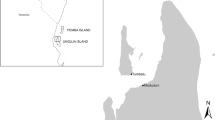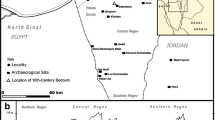Abstract
Glass trade beads, because of their frequency of occurrence at historic sites, and because of the culturally prescribed manner in which they were utilized by Indian groups, should be an artifact type with considerable temporal and cultural interpretive potential in historic archæology. Two approaches, ethnohistoric and archæological, are advocated here as means of maximizing the interpretive potential of beads. Both approaches can contribute to the formalization of descriptive methods as an initial step in the analysis of beads, rendering bead samples from different sites comparable. In the following pages an exploration of both the ethnohistoric and archæological approaches is presented in an effort to demonstrate the potential of trade beads in historic sites archæology and to stimulate more intensive and extensive trade bead research.
Similar content being viewed by others
References
American Fur Company Papers, The n.d. On microfilm, State Historical Society of Wisconsin.
Cleland, Charles E. 1972 The Matthews site (20CL61), Clinton County, Michigan. The Michigan Arch æologist, Vol. 18, No. 4, December, pp. 175–208.
Good, Mary Elizabeth 1972 The Guebert site: an 18th century historic Kaskaskia indian village in Randolph County, Illinois. Memoir II, The Central States Archæological Societies, Inc.
Kidd, Kenneth E. and Martha Ann 1970 A classification system for glass beads for the use of field archæologists. Canadian Historic Sites: Occasional Papers in Archæology and History, No. 1, pp. 46–89.
Spector, Janet D. 1974 Winnebago Indians, 1634–1829: an archeological and ethnohistoric investigation. Unpublished Ph.D. Dissertation, University of Wisconsin, published on demand by University Microfilms, a Xerox Company.
Stone, Lyle 1970 Archæological research at Fort Michilimackinac, an eighteenth century historic site in Emmett County, Michigan: 1959–1966 excavations. Unpublished Ph.D. Dissertation, Michigan State University, published on demand by University Microfilms, a Xerox Company, Vols. I and II.
Woodward, Arthur 1965 Indian Trade Goods, Oregon Archæological Society.
Author information
Authors and Affiliations
Rights and permissions
About this article
Cite this article
Spector, J.D. The interpretive potential of glass trade beads in historic archæology. Hist Arch 10, 17–27 (1976). https://doi.org/10.1007/BF03373995
Published:
Issue Date:
DOI: https://doi.org/10.1007/BF03373995




